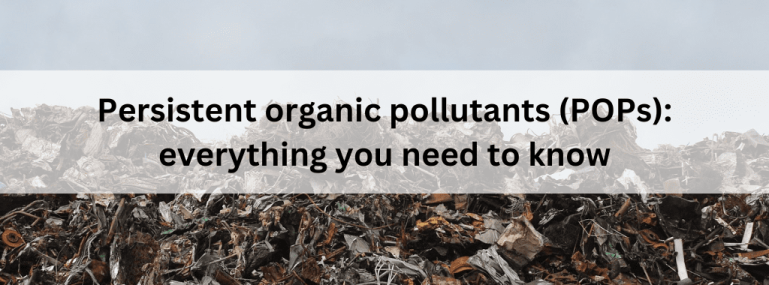There are many instances when harmful chemicals travel and cause adverse effects far from their original places of production and use. A well-known example is persistent organic pollutants (POPs), which can travel long distances and reach remote locations. However, many of these devices contain components and materials that can pose health and environmental risks. As part of this blog post, we will explore the sources and risks of POPs in electronic devices.
Various products include POP (Persistent Organic Pollutants) materials such as circuit boards, casings, cables, batteries, and other electronic device components. These materials can find their way into the environment during both manufacturing and disposal processes, potentially causing environmental contamination.
Low codes are determined by the chemical makeup of waste, as well as whether hazardous waste controls or persistent organic pollutants (POPs) apply. WEEE can be categorized as follows:
- Hazardous waste – waste containing hazardous chemicals above certain concentrations.
- POP waste –If the chemicals are POPs and exceed certain concentrations.

A POP is an organic compound that has toxic properties, persists in the environment, accumulates in food chains, and poses a health and environmental risk. As a result of their persistence, these chemicals have the potential to be transported far from their source through air, water, and migratory species.
The release of POPs into water bodies or the deposit of POPs in soil can pollute these environments. As a result of this contamination, aquatic life, soil organisms, and ultimately humans are at risk of consuming contaminated water or crops.
How to safeguard society and Environment from POP?
The prevention, control, and responsible management of persistent organic pollutants (POPs) are vital for protecting society and the environment. These measures can protect society and the environment from the harmful effects of POPs.
- Hazardous substances can be reduced by adopting eco-design principles.
- Manufacturers, policymakers, consumers, and recycling facilities must collaborate to share knowledge, best practices, and innovations in reducing and eliminating POPs in electronic devices.
- The government should enact and enforce regulations restricting or banning POPs in electronic devices.
- Consumer demand for safer and more sustainable electronic devices can be increased by increasing public awareness about POP risks.
- Developing safer alternatives to POPs commonly used in electronic devices should be the focus of research and development.
Population declines and biodiversity loss can result from POPs negatively impacting ecosystems and biodiversity. Aside from affecting human life, it can also cause cancer, developmental disorders, neurological effects, hormonal disruptions, resulting in thyroid problems, impaired immune function, and metabolic problems.
There is no doubt that POPs have a significant, and widespread, impact on human health and the environment as a whole as a result of their widespread distribution and use. As a result of our inability to reduce the production, use, and release of pollutants that cause damage to human health and to ecosystems, it is essential that we take steps to protect both human health and ecosystem integrity.
ComplianceXL offers specialized solutions to help organizations effectively manage POP-related documentation. The services we provide include consulting, supplier engagement, and more, all to address the challenges posed by Persistent Organic Pollutants. To learn how we can help your organization ensure compliance and safeguard the environment, contact our Material Compliance Specialists today.
FAQs
1. What are the persistent organic pollutants in e-waste?
E-waste contains numerous toxic chemicals including metals such as lead, cadmium, mercury, and nickel, and organic compounds such as flame retardants, chlorofluorocarbons, (PAHs), polybrominated diphenyl ethers (PBDEs), (PCDD/Fs).





